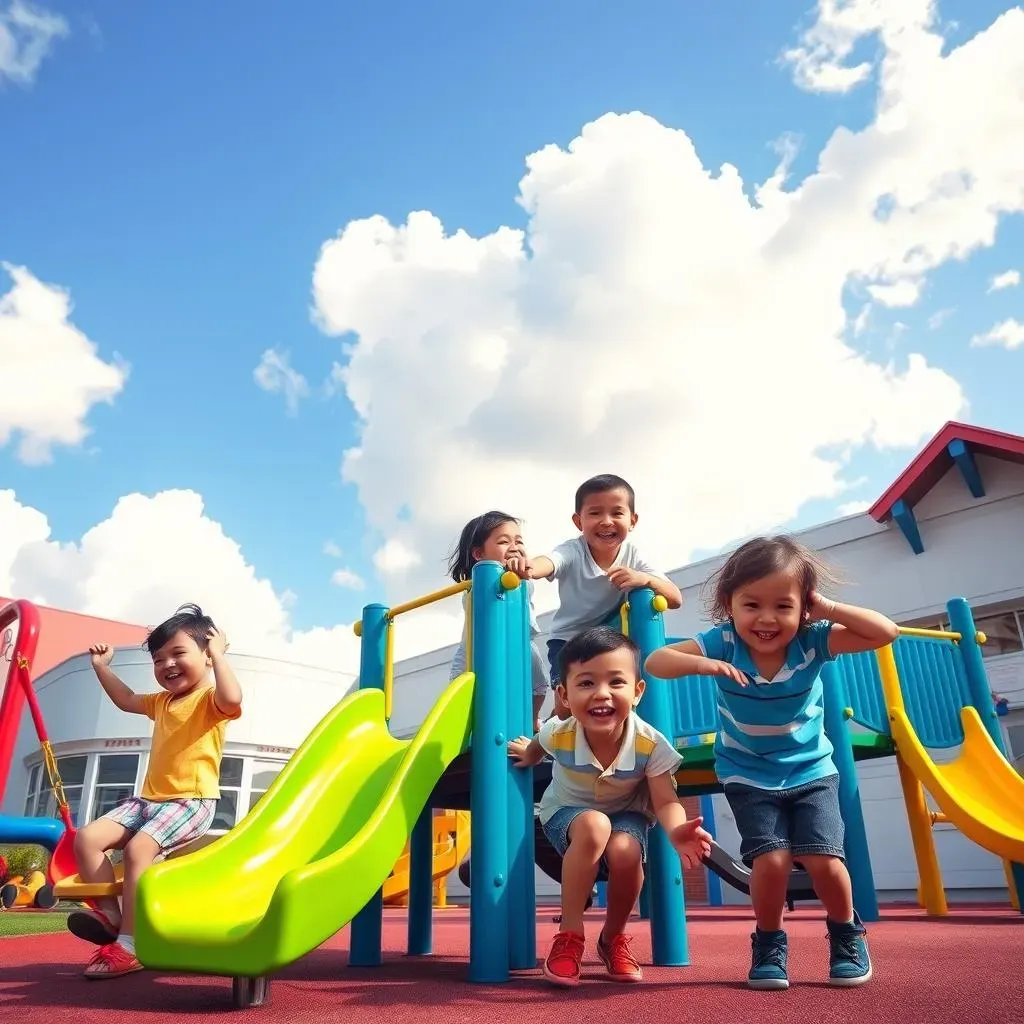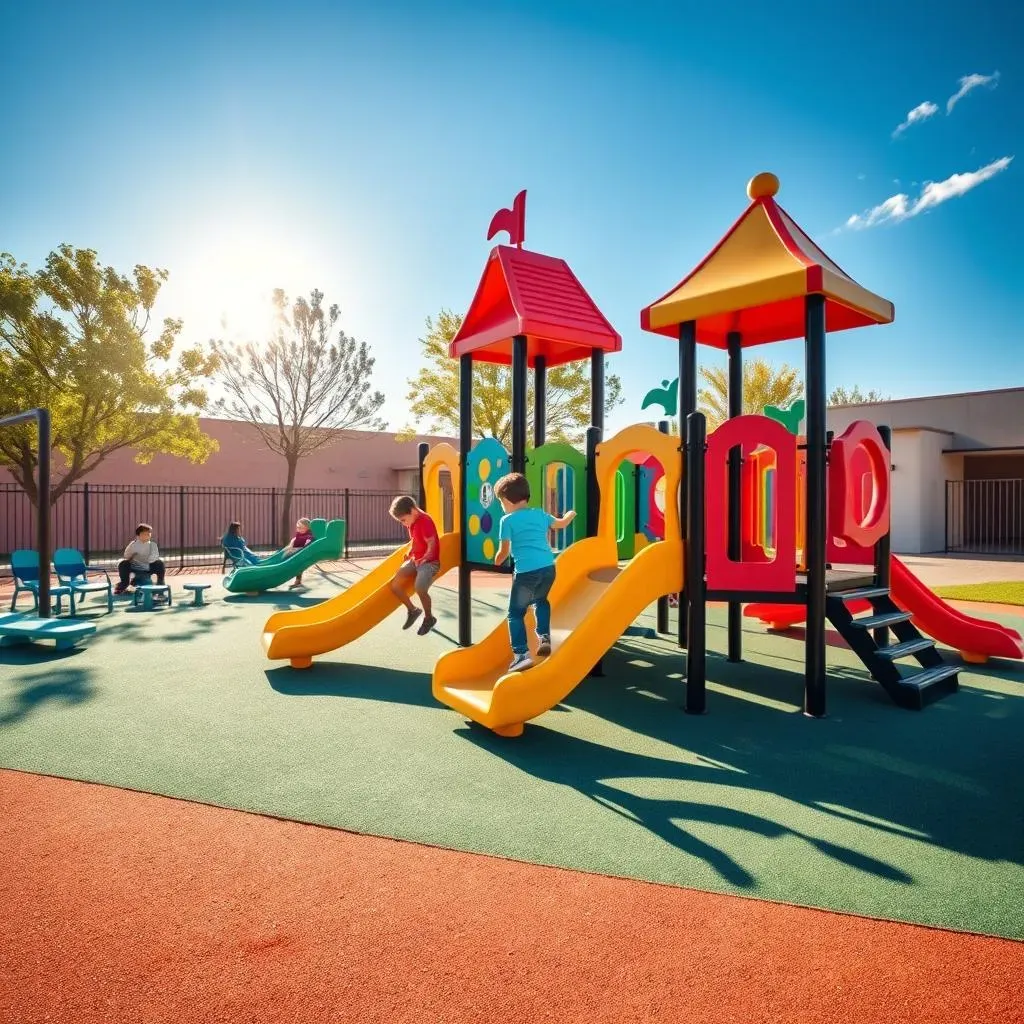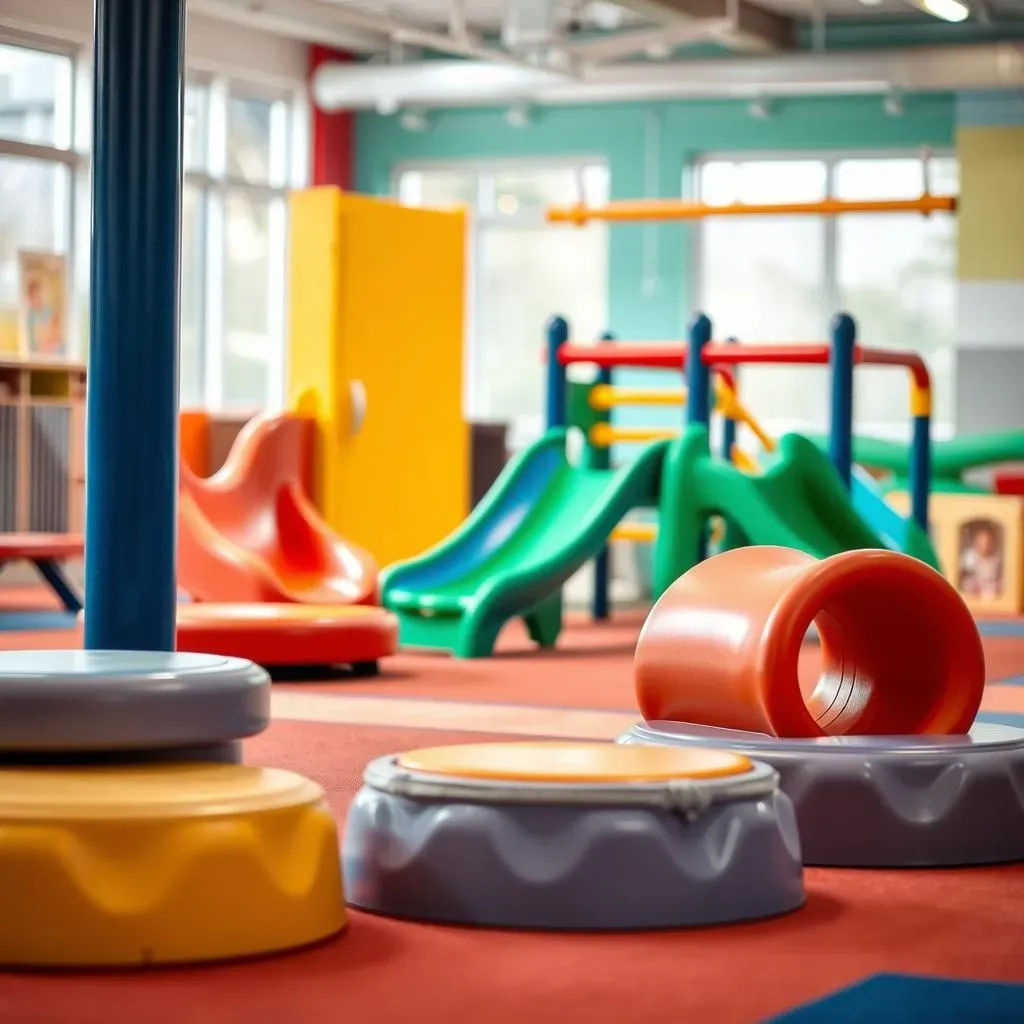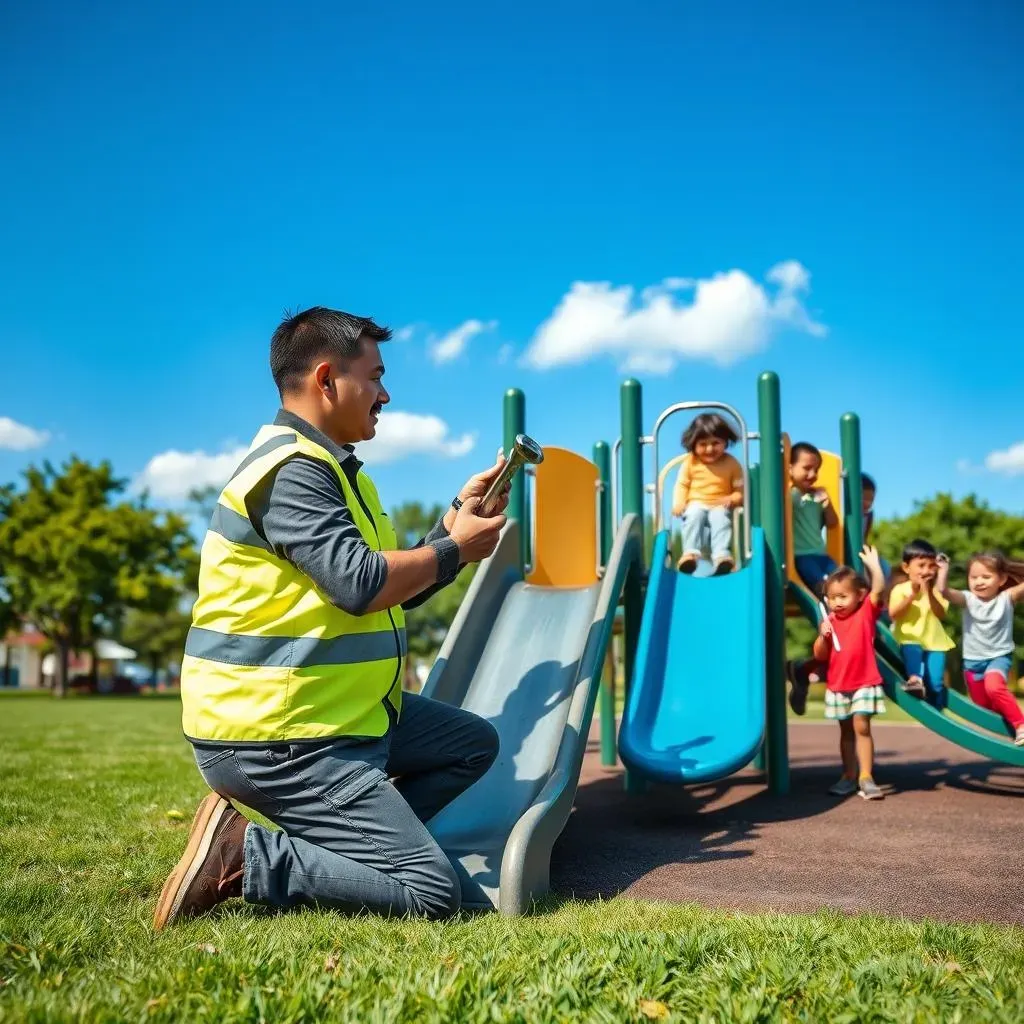Table of Contents
Ever wondered how a simple playground can transform a daycare? It's not just about swings and slides; the right commercial playground equipment for daycares can be a game-changer. We're talking about creating spaces where kids thrive, learn, and burn off that endless energy. Choosing the right equipment can feel like a mountain to climb, but it doesn't have to. This article will be your trusty guide, helping you navigate the world of daycare playground equipment. We'll explore why it matters, what key features to look for, how to choose age-appropriate options, and even tackle the nitty-gritty of installation and maintenance. So, whether you're a daycare owner, a teacher, or just someone passionate about kids' play, stick with us. Get ready to discover how to create an amazing outdoor experience for the little ones.
Why Commercial Playground Equipment Matters for Daycares

Why Commercial Playground Equipment Matters for Daycares
so you're thinking about a playground for your daycare, right? It's way more than just a place for kids to run wild. It's a crucial part of their development. Think about it: kids learn through play. Commercial playground equipment provides a structured environment where they can build physical strength, develop coordination, and boost their confidence. It’s not just about burning energy; it’s about learning how their bodies move and how to interact with the world around them. A well-designed playground encourages kids to be active, which is super important for their health. Plus, it's a fantastic way for them to socialize, learn how to share, and make friends. It's a whole package of benefits, really.
Key Features to Look for in Daycare Commercial Playground Equipment

Key Features to Look for in Daycare Commercial Playground Equipment
Safety First, Always
so we're talking about kids, right? Safety is non-negotiable. When you're looking at commercial playground equipment for daycares, think about materials. Are they durable and non-toxic? You want stuff that can handle a bunch of kids climbing all over it every single day. Look for rounded edges and make sure there aren't any places where little fingers or clothes could get caught. It's also super important to check if the equipment meets safety standards. Remember, a fun playground shouldn't be a risky one.
And it's not just about the equipment itself. The ground surface matters a ton too. You need something soft like rubber mulch or engineered wood fiber to cushion those inevitable falls. I mean, kids are going to be kids, right? They'll trip, they'll stumble, and they'll definitely test gravity. A good surface can make all the difference between a boo-boo and a trip to the ER. So, make sure to check the safety certifications and the surface of the playground. It is essential to create a safe environment.
Durability and Design
Now, let's get real about durability. Daycare playground equipment needs to be tough. It’s going to be used and abused day in and day out. We're talking about kids running, jumping, and maybe even trying to see if they can climb the slide (they will). So, you want materials that can stand up to that kind of wear and tear. Think about things like rust-resistant metal and fade-resistant plastic. You don't want the playground to look old and worn out after just a couple of months.
The design is also pretty crucial. You want something that's engaging and that encourages different types of play. Think about incorporating various elements like climbing structures, slides, and maybe even some sensory features. It's all about keeping things interesting and providing a range of activities to meet different interests and skill levels. A good design can make a huge difference in how much the kids enjoy the playground.
Feature | Why It Matters |
|---|---|
Non-Toxic Materials | Keeps kids safe from harmful chemicals. |
Rounded Edges | Prevents cuts and scrapes. |
Safety Standards Compliance | Ensures equipment meets safety regulations. |
Soft Ground Surface | Cushions falls and reduces injuries. |
Rust-Resistant Materials | Extends the life of the equipment. |
Engaging Design | Keeps kids interested and promotes play. |
Selecting AgeAppropriate Commercial Playground Equipment for Daycares

Selecting AgeAppropriate Commercial Playground Equipment for Daycares
Infants and Toddlers (6-23 Months)
so we're talking about the tiny humans now. When you're picking out commercial playground equipment for daycares for infants and toddlers, you've got to think small, safe, and sensory. They're not scaling walls or doing flips just yet. We're talking about things like low platforms, soft crawl-through tunnels, and gentle rockers. Think about how they explore the world – through touch, sight, and sound. You want equipment that helps them develop those senses. Things like textured surfaces, bright colors, and maybe some gentle sounds can make a big difference. It's all about creating a safe space for them to explore and start developing their motor skills. Remember, at this age, supervision is key.
I saw a daycare once that had a little area with soft, oversized blocks. The babies loved them. They would push them, crawl over them, and even try to stack them. It was simple, but it kept them engaged and helped them develop their coordination. So, keep it simple, keep it safe, and keep it sensory when you're thinking about this age group.
Preschoolers (2-5 Years)
Now we're moving into the preschool years, and things get a little more adventurous. This is when kids start to really climb, slide, and explore more complex movements. For this age group, you can start thinking about things like small climbing structures, short slides, and maybe even some simple balance beams. It's important to choose equipment that challenges them but is still age-appropriate. You want them to push their limits safely, right? This is also the age where they start playing pretend, so think about how you can incorporate elements that encourage imaginative play. Maybe a playhouse or a small sandbox.
I remember one time, I saw a group of preschoolers playing on a small climbing structure that looked like a little pirate ship. They were all pretending to be pirates, and it was so cute to watch them develop their social skills. They were sharing, taking turns, and just having a blast. So, when you're choosing commercial playground equipment for daycares for this age group, you need to think about how it can encourage not only physical activity but also social and imaginative play.
Age Group | Recommended Equipment | Focus |
|---|---|---|
Infants & Toddlers (6-23 Months) | Low platforms, soft tunnels, gentle rockers | Sensory exploration, motor skill development |
Preschoolers (2-5 Years) | Small climbing structures, short slides, balance beams | Physical activity, imaginative play, social skills |
Considering Development Stages
It's not just about the age range, you know? Every child develops at their own pace. When you're looking at commercial playground equipment for daycares, try to think about different skill levels. You want equipment that provides options for all kids, whether they're just starting to explore or are already little daredevils. Some kids might be comfortable climbing, while others might prefer something like a sensory table. The idea is to create a playground that caters to all different needs and interests.
It's also super important to make sure the equipment is accessible for children with disabilities. Think about things like ramps, wider walkways, and features that are easy for everyone to use. A good daycare playground should be inclusive and welcoming for all children. And remember, it's not just about the equipment itself. The layout of the playground also matters. You want to create a space that encourages exploration, discovery, and, most importantly, fun for all.
Installation and Maintenance of Commercial Playground Equipment at Daycares

Installation and Maintenance of Commercial Playground Equipment at Daycares
Professional Installation: Why It's Worth It
So, you've picked out the perfect commercial playground equipment for daycares, great! But hold up—don't think you can just slap it all together like it's a giant Lego set. Installation is crucial, and honestly, it's best left to the pros. I know, I know, you might be thinking, "I'm pretty handy; I can do it myself." But trust me, proper installation is about more than just screwing a few bolts together. We're talking about safety, compliance with regulations, and making sure the equipment is stable and secure. Professionals know all the ins and outs of this process. They'll make sure everything is leveled, anchored correctly, and meets all the necessary safety standards. It's an investment, sure, but it's an investment in the safety of the kids who will be using it. And that's priceless, right?
Plus, a professional installation can save you headaches down the road. If the equipment isn't installed correctly, it might not last as long, or worse, it could become a safety hazard. Think of it like this: you wouldn't try to rewire your house yourself unless you're an electrician, would you? Same goes for playground equipment. It's complex, it's important, and it's best left to the experts.
Regular Maintenance: Keeping It Safe and Fun
Alright, now that the playground is up and running, the job isn't over. Regular maintenance is absolutely key to keeping it safe and fun for the kids. We're talking about routine check-ups, not just when something looks obviously broken. Things can loosen over time with use and weather, so you need to be on top of it. Schedule regular inspections to check for loose bolts, cracked surfaces, or any signs of wear and tear. You'll want to tighten bolts, repaint surfaces, and replace parts when needed. Think of it like taking care of a car; regular maintenance keeps it running smoothly and prevents bigger problems down the road.
Don't forget about the ground surface either. Make sure it's still soft and shock-absorbent. You might need to rake it, add more mulch, or even replace it if it's worn out. And take a look at the surroundings too. Are there any sharp objects or hazards around the playground? Keep it clean and clear. By taking the time to do these checks, you're making sure the playground is always in top shape for the kids. It’s all about creating a safe, engaging environment that they can enjoy for years to come. It’s not just about ticking a box; it’s about showing the kids that you care about their safety and happiness.
Maintenance Task | Frequency | Why It's Important |
|---|---|---|
Check for Loose Bolts | Weekly | Prevents equipment from becoming unstable |
Inspect for Cracks/Damage | Weekly | Ensures equipment is safe to use |
Check Ground Surface | Monthly | Maintains shock absorption |
Clean the Playground | Monthly | Removes debris and keeps it hygienic |
Tighten Bolts | As needed | Prevents wobbling and unsafe movement |
Replace Worn Parts | As needed | Extends the life of the equipment |
DIY vs. Professional Maintenance: Knowing When to Call for Help
so you've got your checklist, but when do you tackle it yourself, and when do you call in a professional? Some basic maintenance, like tightening a few bolts or raking the ground surface, you can totally handle. But for more complex issues, like replacing a structural part or repairing significant damage, it's best to call in the pros. Think of it as knowing your limits. There are some things that you can probably handle. But when it comes to the safety of kids, there is no room for error.
Plus, professionals have the tools and the expertise to do the job right. They can also spot issues that you might miss. So, while you might save a few bucks by doing some maintenance yourself, it's important to know when to seek professional help. It's better to be safe than sorry, right? Remember, the goal is to provide a space where kids can play, grow, and learn without any worries. And that's worth every penny.
Wrapping Up: Creating the Perfect Play Space
Selecting the right commercial playground equipment for your daycare is an investment that pays off in happy, healthy, and engaged children. By focusing on safety, age-appropriateness, and durability, you can create an outdoor space that's not just fun, but also encourages development and learning. Remember, it's not just about having a playground, it's about crafting an environment where kids can explore, imagine, and grow. With the right planning and equipment, you're not just building a playground; you're building a foundation for their future.